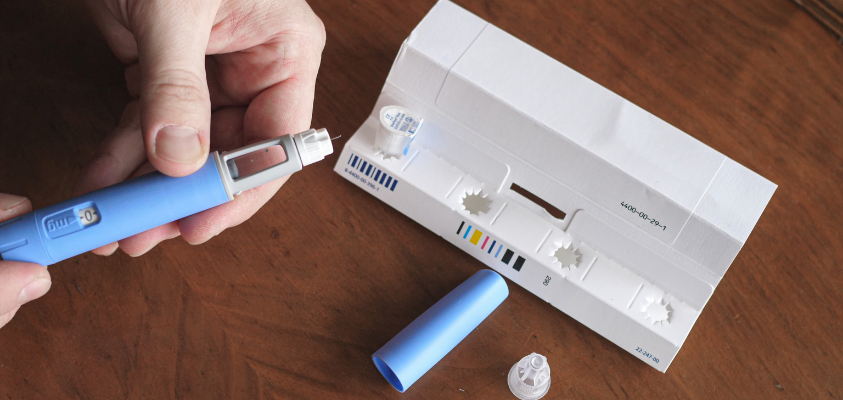In the realm of pelvic health, it's crucial to be aware of how certain medications, like Ozempic and other GLP-1 agonists, can influence various aspects of your well-being.
Here's a closer look at how Ozempic may affect your pelvic floor and some tips to manage potential challenges.
The Ozempic Effect on Pelvic Health:
-
Constipation Concerns
Ozempic, known for its role in managing diabetes and helping with weight loss achieves this by slowing down motility which can lead to constipation. Another GI side effect Ozempic has is diarrhea. This can significantly impact pelvic health, causing abdominal discomfort, pushing and straining during bowel movements and potentially other complications such as prolapse, hemorrhoids or stool leakage.
-
Nausea and Heartburn Hurdles
The medication's side effects, such as nausea and heartburn, can pose challenges to your exercise routine. Persistent discomfort may deter physical activity, affecting your overall health.
-
Vomiting's Impact on the Pelvic Floor
Vomiting resulting from Ozempic-induced nausea can exert pressure on the pelvic floor. Some people have reported having urinary incontinence due to vomiting. Understanding this dynamic is essential for those aiming to maintain pelvic health.
-
Energy Depletion and Muscle Mass Loss
Some individuals on Ozempic may experience reduced energy levels, hindering their ability to exercise and potentially leading to muscle mass loss. This can be a concern for overall health, especially for women. As women age their bone density and muscle mass also decreases, so strength training is a very crucial role for them.
Pelvic Floor Physical Therapy: A Solution for Wellness
To counter these challenges and promote overall health, consider working with a physical therapist or another wellness provider. They can help you reach your weightloss goals and mitigate some of the side effects these medications may have.
Benefits of Pelvic Floor Physical Therapy
- Maintaining Strength
Targeted exercises help keep the pelvic floor muscles strong. Adding strength training to full body to keep muscle mass and bone density.
- Constipation Relief
Therapeutic interventions can alleviate constipation, ensuring better bowel health.
- Exercise Adaptations
Physical therapists can guide you in adapting your exercise routine to accommodate any challenges posed by Ozempic.
Tips to Manage Ozempic-Related Symptoms
-
Colon Massage for Constipation
Gentle abdominal massage can stimulate bowel movements and alleviate constipation.
-
Hydration and Fiber
Ensure an adequate intake of water and fiber to promote healthy digestion and prevent constipation.
-
Nutrition Considerations
Avoid greasy foods and excessive sugar, as they can exacerbate nausea and heartburn.
-
Adapted Exercise Routine
Modify your exercise routine to suit your energy levels and any potential muscle mass concerns.
In conclusion, understanding the impact of Ozempic on pelvic health is crucial for individuals managing diabetes. Integrating pelvic floor physical therapy and adopting lifestyle adjustments can contribute to maintaining an active, strong, and healthy pelvic floor. By staying informed and proactive, you can navigate the challenges associated with Ozempic and prioritize your overall well-being.






